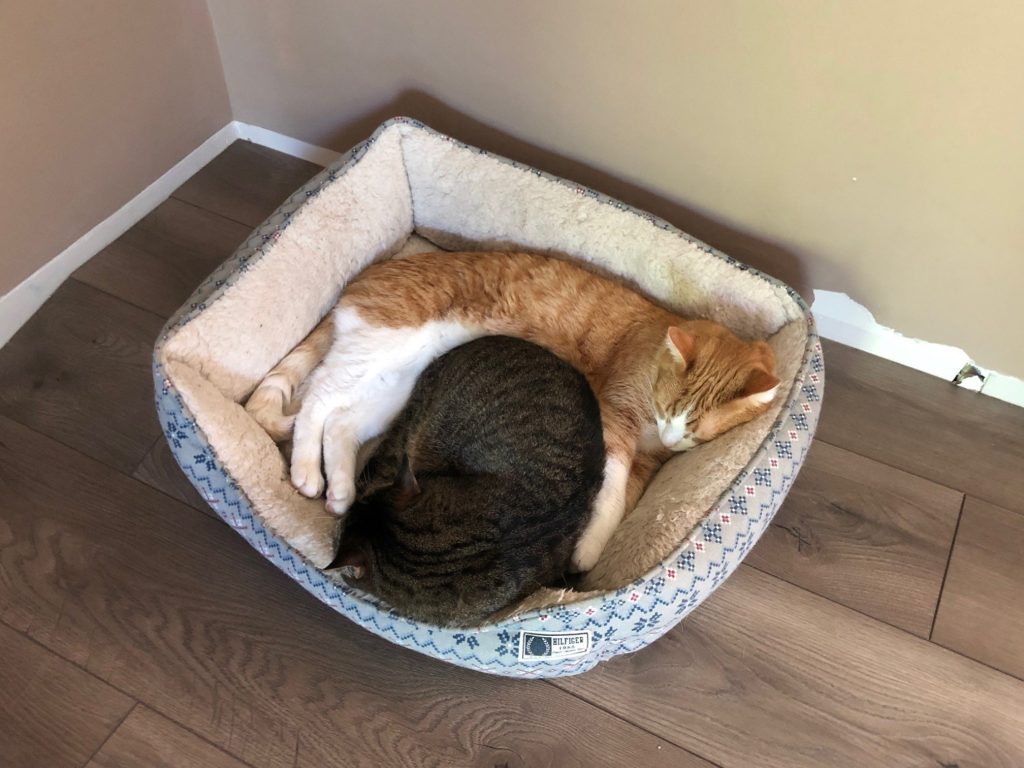Veterinary professionals around the globe now have access to Practice Guidelines created by a Task Force of board-certified veterinary and applied behaviorists and clinical experts in feline medicine and behavior. The 2024 AAFP Intercat Tension Guidelines: Recognition, Prevention, and Management Guidelines support veterinary professionals in understanding social behavior between cats and, more specifically, in recognizing intercat tension, preventing or minimizing its occurrence, and managing stressors. In developing the Guidelines, the Task Force has modified the five pillars of a healthy feline environment to provide a framework to assist in the prevention or management of intercat tension in households with two or more cats.
Dr. Ilona Rodan, Co-chair of the Guideline Task Force, emphasized the importance of this work: “The AAFP’s Intercat Tension Guidelines were developed because intercat tension or conflict between household cats is common but often unrecognized because most signs are subtle. Intercat tension can occur even in two-cat households, and most frequently occurs when introducing a new cat into the home. These Guidelines aid veterinary professionals and caregivers in detecting and preventing signs of tension, thus minimizing fear-anxiety, stress-related diseases, and undesirable behaviors, and improving the wellbeing of cats.”
Key content of the Guidelines include:

- Debunking the 10 common myths that have the potential to negatively impact the wellbeing of cats
- Visual examples of intercat tension
- An Appendix with several case studies
- A comprehensive table of psychotherapeutic medications
- A detailed algorithm that outlines a systematic approach to preventing, recognizing, and resolving intercat tension
- A step-by-step approach to introducing a new cat into a household with one or more resident cats
- A range of management tools to promote caregiver education
To enhance cat caregiver assessment and education, the Guidelines offer diverse management tools, including a multi-cat home profile questionnaire, a behavior modification handout, and a comprehensive step-by-step guide for introducing a new cat(s) to a home with resident cat(s). These resources cover home preparation and proper introduction techniques and are complemented by an accompanying caregiver brochure.
Dr. Daniela Ramos, fellow Co-chair of the Guideline Task Force, highlighted the comprehensive nature of the Guidelines: “In order to achieve success in managing any feline behavior problem, it is essential to understand the cats’ motivations, emotions, and development. Besides management tools, the Guidelines present a complete set of updated information on cat-cat social behavior and the process by which intercat tension arises. Equipped with these resources, veterinary professionals can effectively manage such cases using proven tools and strategies.”
“We are thrilled to announce the release of these new Guidelines addressing an all-too-common issue faced by cat caregivers,” said Heather O’Steen, AAFP’s CEO. “Tension between household cats is often displayed as subtle behavioral changes which can go unnoticed in the home. Over time, this tension can result in more overt behavioral concerns and even stress-associated disease. When this happens, unfortunately, the cat(s) may be relinquished or even euthanized. It is the AAFP’s goal that these Guidelines will provide veterinary professionals with the tools to help prevent and manage these situations to maximize harmony in every multi-cat household.”
Download GuidelineThe Task Force included Ilona Rodan, DVM, DABVP (Feline), (Co-chair); Daniela Ramos, MV, MSc, PhD, Diplomate (Cleve-CVLBAMC), (Co-chair); Hazel Carney, DVM, MS, DABVP (Canine/Feline); Theresa DePorter, BSc, DVM, MRCVS, DECAWBM, DACVB, MRCVS; Debra F. Horwitz, DVM, DACVB; Daniel Mills, BVSc, PhD, CBiol, FRSB, FHEA, CCAB, Dip ECAWBM(BM), FRCVS; and Kristyn Vitale, MEn, PhD, CAAB.
The Guidelines are proudly endorsed by:
The Guidelines development was supported by an educational grant to the FelineVMA from:





